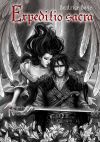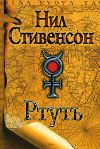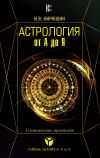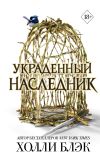Текст книги "Fasti"

Автор книги: Ovid
Жанр: Зарубежные стихи, Зарубежная литература
Возрастные ограничения: +12
сообщить о неприемлемом содержимом
Текущая страница: 2 (всего у книги 6 страниц) [доступный отрывок для чтения: 2 страниц]
These were the Fasti Sacri or Kalendares, but the word Fasti was applied to another kind of register, named the Fasti Historici or Consulares, which contained the names of the magistrates of each year, especially the consuls, and the chief events of the year were set down in them, so that they formed a kind of annals of the state. When we read of the name of any consul, as was the case with L. and M. Antonius, being erased from the Fasti by a senatusconsult, it is always these Fasti that are meant.
§ 5.
Of Ovid's Poem on the Fasti.
Among the choir of poets who shed glory on the reign of Augustus, the first place for originality may be claimed by P. Ovidius Naso. His Heroic Epistles had no model in Grecian literature; his Art of Love, the most perfect of his works, was equally his own, though didactic poetry had been cultivated in Greece; his Metamorphoses bore perhaps a resemblance to a lost poem of Nicander or Callimachus; but unless a work of this last poet, presently to be noticed, was of the same kind with it, Grecian literature contained nothing resembling his Fasti.
To a poet like Ovid, of various powers and great command of language, few subjects could have appeared to possess more 'capabilities,' to use a hackneyed but expressive term. He had here an opportunity of displaying his power in the light, easy, and graceful style, when narrating the adventures of the god of Grecian theology; while the real and legendary history of his country afforded subjects which might have called forth the highest powers of genius, and have awakened the sympathies of every Roman reader. Here, however, I think he has failed; Ovid in fact very much resembled a distinguished poet of our own days, who, like him, excels in the light and amatory, and sportive style, but whose efforts in the grave and dignified are not equally successful. In reading the poem, I have sometimes asked myself if it would not have been better had the Fasti of Rome been the theme of the Mantuan instead of the Pelignian bard. Where Ovid fails Virgil would certainly have succeeded, and the Regifugium and fall of the Fabii would have come down to us in strains equal to those which celebrate the wars of ancient Italy. Whether the reverse would have been the case, and that, in those lighter and more familiar parts, where Ovid succeeds Virgil would have failed, I take not on me to decide; but I should reckon much on the taste and judgement of the author of the Georgics. Still, even in the higher parts, we know not to what disadvantage even Virgil's verses might have competed with the venerable Annals of Ennius, with whom he rather seemed to shun than to seek collision. This is a question, however, which can never be decided, and, much as I delight in the poetry of Virgil, I regard him as inferior in genius to Ovid. Virgil depends on others, he always imitates; Ovid borrows rarely, in composition he is always best when most independent.
I do not think that Ovid had any model for his Fasti; the idea might have been suggested to him, as it is thought, by this verse of Propertius (iv. 1. 69):
Sacra, diesque canam et cognomina prisca locorum,
with which he concludes a poem, in which he feigns himself to be shewing to a stranger the principal monuments of Rome. Callimachus, too, had written a poem which, like all the poetry of the Alexandrian period, was well known at Rome and was quoted by Varro, Martial, Servius and others. Its title was [Greek: Aitia], and, from its name and the few fragments and scanty accounts of it which remain, it appears that it treated of the causes of matters relating to the gods and ancient heroes of Greece. From an epigram in the Anthology, we learn that he feigned that he was transported in a dream to Mt. Helicon, and there received his information from the Muses. The epigram ends thus:
[Greek:
Ai de hoi eiromeno, amph' Ogugion Haeroon
Aitia kai makaron eiron ameibomenai].
It is uncertain whether the poem was in heroic or elegiac measure. Ovid appears to have been acquainted with it, for (Trist. v. 5. 33.) when speaking of the dividing of the flame on the pyre of the Theban brothers he adds—
Hoc, memini, quondam fieri non posse loquebar,
Et me Battiades judice falsus erat.
The difference, however, between this poem and the Fasti, must have been considerable. A Greek poet, named Butas, according to Plutarch (Rom. 21.), wrote [Greek: aitias muthodeis en elegeiois ton Romaikon], from which he quotes these two verses relating to the Luperci, and in explanation of their custom of striking those whom they met—
[Greek:
Empodious tuptontas hopos tote phasgan' echontes
Ex Albaes etheon Romulos aede Remos].
This might appear to have been the model of Ovid's poem, but it is unknown when Butas lived, and he may as well have written after as before the Latin poet.
On the whole, I think Ovid's claim to originality in this poem cannot justly be contested. Even though he may have taken the idea of it from others his mode of treating the subject is his own.
When Ovid first conceived the idea of writing a poem on the Roman Fasti, it is not likely that he was very well furnished with the requisite knowledge. Any one, who is familiar with the internal history of literature, knows how common it is for a writer, especially a poet, to select a subject of which he is sufficiently ignorant, and then to go in search of materials. Such appears to me to have been the case with Ovid, and the errors into which he falls prove that though a diligent enquirer, as I think he was, he never arrived at accuracy in history or science; with Grecian mythology he was intimately acquainted, and here he is superior to Virgil, whose knowledge of the history and institutions of ancient Italy much exceeded his.
The Annals of Ennius, the historical works of Fabius Pictor and his successors down to Livy, contained the history of Rome, and these works, it is evident, Ovid had studied; for the institutions and their origins his chief source must have been the writings of L. Cincius Alimentus, the contemporary of Fabius Pictor, the most judicious investigator of antiquities that Rome ever produced. The various Fasti, such as those of his contemporary Verrius Flaccus, of which fragments have been discovered and published,1111
At Rome, in 1772, by Fogginius.
[Закрыть] contributed much information, and various passages of the poem intimate that personal inquiry and oral communication aided in augmenting his stores of antiquarian lore. His astronomical knowledge was probably derived from the ordinary Calendars, and as they were not strictly correct, and the poet, in all probability, did not apply himself with much relish to what he must have viewed as a dry and uninviting study, we are not to look in him for extreme accuracy on this head, and must not be surprised to meet even gross blunders.
Two points are to be considered respecting this poem, namely, the time when it was written and published, and whether, when published, it contained any more than the six books which have come down to us.
The mysterious relegation of Ovid to Tomi, on the coast of the Euxine, took place A.U.C. 762, in the fifty-second year of the poet's age. In the long exculpatory epistle to Augustus, which forms the second book of his Tristia, he mentions the Fasti as a work actually written, and dedicated to that prince, but interrupted by his exile. The poem itself contains many passages which were evidently addressed to him. On the other hand, it is actually dedicated to Germanicus, the adoptive son of Tiberius, and L. I. v. 285, he mentions the triumph of that prince over the Catti, Cherusci and Angevarii, which, according to Tacitus (Ann. II. 41.), took place in the year 770, which was the year of the poet's death. It would, therefore, seem to follow at once that this is the true date of the publication of the poem, were it not that Tacitus (II. 26.) tells us that the triumph had been decreed by the senate in the year 768, so that the poet's words may be proleptical. The other, however, is by far the most natural and probable interpretation of his words. It is confirmed by a passage (L. II. 55. et seq.) in which he praises Tiberius as the builder and restorer of the temples of the gods, and in this very year 770, as we learn from Tacitus, the emperor repaired and dedicated the temple of Liber, Libera and Ceres, that of Flora and that of Janus. We may, therefore, venture to assert that the year 770 was that of the publication of this poem. We are now to enquire whether any more appeared then than what has come down to us.
In the epistle to Augustus, above alluded to, Ovid says,
Sex ego Fastorum scripsi totidemque libellos;
Cumque suo finem mense volumen habet.
Idque tuo nuper scriptum sub nomine, Caesar,
Et tibi sacratum sors mea rupit opus.
Hence it has become the prevalent opinion that he wrote twelve books, of which the half has perished. This appears certainly to follow plainly enough from the words of the poet, but the silence of the ancients respecting the last six books is strong on the negative side, for of all the quotations which we meet of this work, particularly in Lactantius, there is not a single one that is not to be found in the books which we possess. I, therefore, agree with Masson, in his life of the poet, that the meaning of those verses is, that he had collected his materials for the whole work, and digested them under the different months, and in part versified them. This is applying no force to the verb scribo; we should recollect that Racine, when he had his materials collected and his plot arranged, used to say Voilà ma tragédie faite! We cannot say whether Ovid had versified the last six books, for he may have done so, and they may have been lost at the time of his death. There is a curious coincidence between the fate of Ovid's Fasti and Spenser's Faerie Queene; of each we have but the one half, and it is a matter of controversy respecting the remaining books of each, whether they were never written, or, having been written, unhappily chanced to perish.
§ 6.
Of the Editions of Ovid's Fasti.
The earliest edition of this poem with notes was in the works of Ovid, edited by A. Navagero, a Venetian nobleman, and printed by Aldus, in the year 1502. An edition appeared at Basle, in 1550, edited by J. Micyllus, with the commentaries of several men of learning. Hercules Ciofani, a native of Sulmo, edited in 1578-1580, the works of his compatriote poet. In the Fasti he used twelve of the best MSS. and he added a body of notes on the whole of Ovid's works, which were afterwards printed separately, by Plantin, at Antwerp. The next who devoted his labours to the Fasti was a young Sicilian nobleman, named Carlo Neapolis, who wrote, at the age of twenty one, a commentary on this poem, which was published at Antwerp, in 1639, under the title of Anaptyxis ad Fastos Ovidianos. The celebrated N. Heinsius also undertook the task of elucidating this pleasing poet, whose entire works, castigated by the aid of upwards of sixty MSS. and of great learning and critical sagacity, he gave to the light, in 1658-1661, at Amsterdam, in 3 Tom. 12. with brief notes. Finally, appeared at the same place, in 1727, in 4 vols. 4. the works of Ovid, edited by Peter Burmann; this editor gave a revision of the text of Heinsius, which he occasionally altered, and he added, in whole or in part, the notes of the preceding commentators.
These were the principal editions of this poem previous to the present century. I should add that G. C. Taubner published an edition of it at Leipzig, in 1747, with a selection of notes from preceding commentators, to which he added his own observations; and that C. W. Mitscherlich published at Göttingen, in 1796-98, in 2 vols. 8vo. the works of Ovid with an amended text. But in the year 1812, G. E. Gierig, who had already published an edition of the Metamorphoses with a commentary, gave out the Fasti in a similar manner. He has revised the text, and his notes are generally extremely good, though liable to the charge of needless prolixity in some parts, and too great brevity in others. It is however, a valuable edition on the whole, and the best for general use. In the Oxford edition of the works of Ovid, published in the year 1825, the entire notes of this critic have been given.
J. P. Krebs, who had thirty years before translated this poem into German, gave an edition of it for the use of schools in 1826. His attention was chiefly directed to the text, and he has most carefully given all the various readings, to which he adds parallel and explanatory passages from other writers, and the dates of the several events which are mentioned in the poem. Beyond this his notes do not extend. His text has been adopted for the present edition, but I have noticed only the various readings of greatest importance.
FASTI
KALENDARES ROMANI
Ex Ovidio
JANUARIUS. LIB. I
1. A. KAL. F. Novi consulatus initia, 75, Jani festum, 89. Aesculapii et Jovis templa in insula Tiberina consecrata, 290. 2. B. IV. NON. F. 3. C. III. NON. C. Cancer occidit, 311. 4. D. PR. NON. C. 5. E. NON. F. Lyra oritur, 315. 6. F. VIII.ID. F. 7. G. VII. ID. C. 8. H. VI. ID. C. 9. A. V. ID. Agonalia celebrata, 317. Delphini ortus, 457. 10. B. IV. ID. EN. Hiems media, 459. 11. C. III. ID. NP. Carmentalia, 461. Juturnae sedes in campo Martio ad aquam Virginem dicata, 463. 12. D. PR. ID. C. 13. E. ID. NP. Jovi Statori ovis semimas immolabatur, 587. Populo provinciae redditae. 589. Octaviano Augusti nomen datum, 590. 14. F. XIX. KAL. FEBR. EN. 15. G. XVIII.KAL Carmentalia relata, 617. Porrimae et Postvertae festus dies, 631. 16. H. XVII. KAL. C. Concordiae templum prope tedem Junonis Monetae dedicatum, 637. 17. A. XVI. KAL. C. Sol Aquarium ingreditur relicto Capricorno, 651. 18. B. XV. KAL. C. 19. C. XIV. KAL. C. 20. D. XIII. KAL. C. 21. E. XII. KAL. C. 22. F. XI. KAL. C. 23. G. X. KAL. C. Lyra occidit, 653. 24. H. IX. KAL. C. Stella in medio Leonis pectore occidit, 655. Sementivae feriae circa hoc tempus indictae, 657. Paganalia, 669. 25. A. VIII. KAL. C. 26. B. VII. KAL. C. 27. C. VI. KAL. C. Castori et Polluci templura ad Juturnae stagnum dedicatum, 705. 28. D. V. KAL. C. 29. E. IV. KAL. F. 30. F. III. KAL. NP. Pacis ara dicata, 709. 31. G. PR. KAL. C.
FEBRUARIUS. LIB. II
1. H. KAL. N. Templum Junoni Sospitae positum, 65. Lucus Asyli celebratus, 67. Jovi in Capitolio bidens mactata, 69. 2. A. IV. NON. N. Lyra occidit, 73. et Leo medius, 77. 3. B. III. NON. N. Delphinus occidit, 79. 4. C. PR. NON. N. 5. D. NON. (N.) Augustus Pater Patriae dictus, 119. Aquarius medius oritur, 145. 6. E. VIII. ID. N. 7. F. VII. ID. N. 8. G. VI. ID. N. 9. H. V. ID. N. Veris initium, 149. 10. A. IV. ID. N. 11. B. III. ID. N. Arctophylax oritur, 153. 12. C. PR. ID. N. 13. D. ID. NP. Fauni sacra, 193. Fabianae cladis memoria, 195. 14. E. XVI. KAL. MART. N. (C.) Corvus, Anguis, Crater oriuntur, 243. 15. F. XV. KAL. NP. Lupercalia Fauno sacra, 267. Ventorum inconstantia per sex dies, 453. Aquario relicto Sol Pisces iugreditur, 457. 16. G. XIV. KAL. EN. 17. H. XIII.KAL. NP. Quirini sacra, 475. Stultorum festiis dies, 513. Fornicalia, 527. 18. A. XII. KAL. C. 19. B. XI. KAL. C. Feralia, i. e. ultimus placandis Manibus dies. 567. Deae Mutae sacra facit anus, 571. 20. C. X. KAL. C. 21. D. IX. KAL. F. 22. E. VIII.KAL. C. Charistia, cognatorum sacra, 617. 23. F. VII. KAL. NP. Terminalia, 639. 24. G. VI. KAL. N. Regifugium, 685. Hirundo advenit, veris praenuntia, 853. 25. H. V. KAL. C. 26. A. IV. KAL. EN. 27. B. III. KAL. NP. Equiria, 857. 28. C. PR. KAL. C.
MARTIUS. LIB. III
1. D. KAL. NP. In flaminum domibus, regia, curia, Vestae aede novae ponuntur laureae, ignis Vestae reficitur, 137. Matronalia, 170. et Salinorum dies festi, 259. 2. E. VI. NON. F. 3. F. V. NON. C. Alter c Piscibus occidit, 399. 4. G. IV. NON. C. 5. H. III. NON. C. Arctophylax occidit, 403. Vindemitor nondum occidit, 407. 6. A. PR. NON. NP. Vestae sacrum, Caesar Augustus Pontifex Maximus factus, 415. 7. B. NON. F. Vejovis templum consecratum, 429. Pegasi collum oritur, 449. 8. C. VIII. ID. F. Corona Gnossis oritur, 459. 9. D. VII. ID. C. 10. E. VI. ID. C. 11. F. V. ID. C. 12. G. IV. ID. C. 13. H. III. ID. EN. 14. A. PR. ID. NP. Equiria altera in campo Martio, 517. vel monte Coelio, 521. 15. B. ID. NP. Annae Perennae sacra, 523. Julii Caesaris caedes, 697. 16. C. XVII. KAL. APR. F. Scorpius ex parte occidit, 711. Itum ad Argeos hac et sequenti die, 791. 17. D. XVI. KAL. NP. Liberalia, Bacchi sacrum, 713. Toga libera data, 771. Milvi ortus, 793. 18. E. XV. KAL. C. 19. F. XIV. KAL. N. Quinquatria Minervae sacra, 809. Minervae natalis, 811. Minerval magistris solutum, 829. Delubra Minervae Captae dedicata, 835. 20. G. XIII. KAL. C. Alter Quinquatruum dies gladiatoriis certaminibns cum tribus sequentibus celebratus, 818. 21. H. XII. KAL. C. 22. A. XI. KAL. N. Sol ingreditur Arictem, 851. 23. B. X. KAL. NP. Quintus idemque ultimus Qumquatruum dies, et Tubilustrium Minervae sacrum, 849. 24. C. IX. KAL. Q. R. C. F. 25. D. VIII. KAL. C. 26. E. VII. KAL. C. Aequinoctium vernum, 877. 27. F. VI. KAL. NP. 28. G. V. KAL. C. 29. H. IV. KAL. C. 30. A. III. KAL. C. Jani, Concordiae, Salutis, Pacis estus dies, 879 31. B. PR. KAL. C. Lunae sacra in monte Aventino, 833.
APRILIS. LIB. IV
1. C. KAL. N. Veneris sacra, 133. Mulieres lavantur, 139. Fortuna Virilis, 145. et Venus Verticordia placari solitae, 151. Scorpius occidit, 163. 2. D. IV. NON. C. Pliades occidere incipiunt, 165. 3. E. III. NON. C. 4. F. PR. NON. C. Festa Idaeae Parentis s. Megalesia Matri Deum, 179. (Ludi per plures dies celebrati, 387.) 5. G. NON. Fortuna Publica sacrata in colle Quirini, 373. 6. H. VIII. ID. NP. Juba a Caesare victus, 377. Libra (per totam noctem in coelo) imbres secum fert, 385. 7. A. VII. ID. N. 8. B. VI. ID. N. 9. C. V. ID. N. Orion occidit, 387. 10. D. IV. ID. N. Ludi in circo, 389. 11. E. III. ID. N. 12. F. PR. ID. N. Ludi Cereales, 393. 13. G. ID. NP. Jovi Victori aedes dicata, 621. Atrium Libertatis instructum, 623. 14. H. XVIII.KAL. MAI. N. Ventus ab occasu cum grandine, 625. Augusti Caesaris victoria Mutinensis, 627. 15. A. XVII. KAL. NP. Fordicidia Telluri sacra in Capitolio et in curia, 629. 16. B. XVI. KAL. N. Augustus Imperator salutatus, 675. Hyades occidunt, 677. 17. C. XV. KAL. N. 18. D. XIV. KAL. N. 19. E. XIII. KAL. N. Equestria certamina in circo in Cereris honorem, 679. Vulpes combustae ultimo Cerealium die, 681. 20. F. XII. KAL. N. Sol in Taurum abit, 713. 21. G. XI. KAL. NP. Palilia, 721. Romae natalis, 806. 22. H. X. KAL. N. 23. A. IX. KAL. N. Vinalia, 863. Veneris sacra, 865. et Jovis, 878. 24. B. VIII. KAL. C. 25. C. VII. KAL. NP. Ver medium, 901. Aries occidit, 903. Canis exoritur, 904. Robigalia, 905. 26. D. VI. KAL. F. 27. E. V. KAL. C. 28. F. IV. KAL. NP. Floralium initium, 943. Vesta in Palatium recepta, 949. dies ex parte Phoebi, 931. et Caesaris, 952. 29. G. III. KAL. C. 30. H. PR. KAL. C.
MAIUS. LIB. V
1. A. KAL. N. Capella oritur, 111. Laribus Praestitibus ara posita, 130. Bonae Deae sacrum, 148. 2. B. VI. NON. F. Argeste flante, 161, Hyades oriuntur, 163. 3. C. V. NON. C. Floralium ultimus dies, 183. Chiron (Centaurus) oritur, 379. 4. D. IV. NON. C. 5. E. III. NON. C. Lyra oritur, 415. 6. F. PR. NON. C. Scorpius occidit (oritur) medius, 417. 7. G. NON. N. 8. H. VIII. ID. F. 9. A. VII. ID. N. Lemuria Manibus sacra, 419. 10. B. VI. ID. C. 11. C. V. ID. N. Lemuria altera, 419. Orion occidit, 493. 12. D. IV. ID. NP. Marti ultori templum sacratum, 545. Ludi Marti in circo, 597. 13. E. III. ID. N. Lemuria ultima, 591. Pliades oriuntur, 599. Aestatis initium, 601. 14. F. PR. ID. C. Taurus oritur, 603. Scirpea simulacra in Tiberim missa, 621. 15. G. ID. NP. Mercurio templum positum ejusque festa dies, 663. 16. H. XVII. KAL. JUN. F. 17. A. XVI. KAL. C. 18. B. XV. KAL. C. 19. C. XIV. KAL. C. 20. D. XIII. KAL. C. Sol in Geminos transit, 693. 21. E. XII. KAL. NP. Agonia altera, 721. 22. F. XI. KAL. N. Canis oritur, 723. 23. G. X. KAL. NP. Tubilustria Vulcano sacra, 726. 24. H. IX. KAL. Q. R. C. F. 727. 25. A. VIII. KAL. C. Templum Fortunae Publicae positum, 729. Aquilae rostrum apparet, 731. 26. B. VII. KAL. C. Bootes occidit, 733. 27. C. VI. KAL. C. Hyas oritur, 734. 28. D. V. KAL. C. 29. E. IV. KAL. C. 30. F. III. KAL. C. 31. G. PR. KAL. C.
JUNIUS. LIB. VI
1 H. KAL. N. Camae deae sacrum, 101. Kalendae fabariae, 180. Junonia Monctae templum sacratum, 180. Martis extra portam Capenam sacra, 191. Tempestatis aedes dedicata, 193. Aquila tota apparet, 196. 2. A. IV. NON. F. Hyadum ortus et Tauri cornuum, pluit, 197. 3. B. III. NON. C. Bellonae aedes consecrata, 199. 4. C. PR. NON. C. Herculi Custodi aedes in circo Flaminio posita, 209. 5. D. NON. (N.) Sanco Fidio Semoni Patri aedes posita, 213. 6. E. VIII. ID. N. 7. F. VII. ID. N. Arctophylax (Lycaon) totus occidit, 235. Ludi Tibridi sacri a piscatoribus celebrati, 237. 8. O. VI. ID. N. Menti delubra data, 241. 9. H. V. ID. N. Vestae sacra, 249. Jovis Pistoris ara in Capitolio, 349. Brutus Gallaecos vicit, 461. Crassus a Parthis victus et occisus, 465. 10. A. IV. ID. N. Delphinua oritur, 469. 11. B. III. ID. N. Matralia Matri Matutae sacra, 473. Matutae templum a Servio rege positum, 479. Rutilius et Didius occisi, 563. Fortunos templum a Servio rege dedicatum, 569. Concordiae aedes per Liviam consecrata, 637. 12. C. PR. ID. N. 13. D. ID. N. Jovi invicto templa data. 650. Quinquatrus minores Minervae sacra, 651. Nubere ante Idus non bonum, 219. nec fas Flaminis Dialis oonjugi crines depectere, 220. nec ungues praesecare, 230. nec viro concumbere, 231. exspectanda dies Q. St. D. F. 233. 14. E. XVIII.KAL. JUL. N. 15. F. XVII. KAL. Q. St. D. F. Thyene, stella in Tauri fronte, oritur, 711. Stercus ex aede Vestae defertur, 713. 16. G. XVI. KAL. C. Zephyro secundo fiante, 715. Orion oritur, 717. 17. H. XV. KAL. C. Delphinus totus apparet, 720. Postumius Tubertus Aequos Volscosque fudit, 721. 18. A. XIV. KAL. C. 19. B. XIII. KAL. C. Sol e Geminis in Cancrum abit, 725. Pallas in Aventino coli coepta, 728. 20. C. XII. KAL. C. Summani templum positum, 729. Ophiuchus (Aesculapius) oritur, 733. 21. D. XI. KAL. C. 22. E. X. KAL. C. 23. F. IX. KAL. C. Flaminius ad lacum Trasimenum victus, 766. 24. G. VIII. KAL. C. Syphax victus, 769. Hasdrubal occisus, 770. Fortunae Fortis honores, 771. 25. H. VII. KAL. C. 26. A. VI. KAL. C. Orionis zona apparet, 785. Solstitium, 789. 27. B. V. KAL. C. Larium delubra posita, 791. et Jovis Statoris aedes, 793. 28. C. IV. KAL. C. Quirino templum positum, 795. 29. D. III. KAL. F. 30. E. PR. KAL. C. Musis et Herculi Musagetae aedes consecrata, 797.
Внимание! Это не конец книги.
Если начало книги вам понравилось, то полную версию можно приобрести у нашего партнёра - распространителя легального контента. Поддержите автора!Правообладателям!
Данное произведение размещено по согласованию с ООО "ЛитРес" (20% исходного текста). Если размещение книги нарушает чьи-либо права, то сообщите об этом.Читателям!
Оплатили, но не знаете что делать дальше?








































